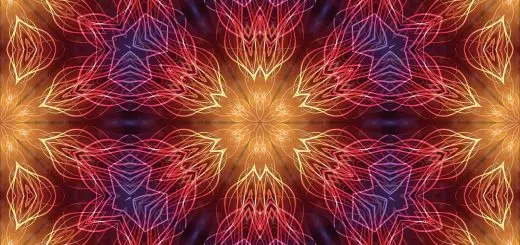The Roman Forum: Mythological Landmarks

Looking for more amazing products? Check out our online store and explore our collection here! Happy shopping!
Before diving in, please note: This post is for informational purposes only. If you’d like to know more about how we approach topics, feel free to check out our friendly Disclaimer Page.
Hey there, amazing readers! 
We’re committed to delivering quality posts, and your support (even just sticking around despite the ads) means everything to us. So, bear with us, and thanks for helping us keep the good vibes rolling. Now, on to the fun stuff!
TRANSLATE BUTTON AT THE END OF THE ARTICLE
A Quick Overview
The Roman Forum, located in the heart of ancient Rome, was the political, religious, and social center of the city.
It was a bustling hub of activity where citizens gathered to conduct business, worship their gods, and participate in public events.
The Forum was also home to several mythological landmarks that held great significance in Roman culture and mythology.
These landmarks were not only architectural marvels but also symbols of the city’s rich history and religious beliefs.
Exploring the Roman Forum: Mythological Landmarks
The Roman Forum was filled with iconic structures that served as important landmarks for the ancient Romans.
These buildings were not only architectural marvels but also held deep mythological significance.
Let’s explore some of the most notable mythological landmarks in the Roman Forum.
Temple of Saturn: Symbol of Wealth and Abundance
The Temple of Saturn, dedicated to the Roman god of wealth and agriculture, was one of the oldest and most important temples in the Roman Forum.
The temple housed the state treasury and was the site of the annual Saturnalia festival, a time of feasting and merrymaking.
The Temple of Saturn symbolized the prosperity and abundance of the Roman Empire, making it a vital landmark in the city.
House of the Vestal Virgins: Keepers of the Sacred Flame
The House of the Vestal Virgins was a sacred complex in the Roman Forum where the Vestal Virgins, priestesses of Vesta, the goddess of the hearth, tended to the sacred flame that was believed to protect the city.
The Vestal Virgins were tasked with maintaining their chastity and keeping the flame burning at all times.
This sacred site was a symbol of purity and devotion in Roman mythology.
Arch of Titus: Commemorating Victory in Jerusalem
The Arch of Titus, a triumphal arch located at the entrance of the Roman Forum, was built to commemorate the military victories of Emperor Titus in Jerusalem.
The arch features intricate reliefs depicting the spoils of war, including the sacred menorah from the Jewish Temple.
The Arch of Titus served as a reminder of Rome’s military prowess and domination over its enemies.
Temple of Castor and Pollux: Divine Twin Protectors
The Temple of Castor and Pollux, dedicated to the divine twin brothers Castor and Pollux, was a prominent temple in the Roman Forum.
According to Roman mythology, Castor and Pollux were known as the protectors of Rome and were believed to have aided the Romans in battle.
The temple served as a symbol of divine protection and was a place of worship for those seeking the favor of the gods.
Curia Julia: Senate House of Ancient Rome
The Curia Julia, the Senate house of ancient Rome, was a political landmark located in the Roman Forum.
It was the meeting place of the Roman Senate, where important decisions regarding the governance of the empire were made.
The Curia Julia was named after Julius Caesar and served as a symbol of the Roman Republic’s political power and authority.
Temple of Vesta: Home of the Eternal Flame
The Temple of Vesta, dedicated to the goddess of the hearth, was one of the most important religious sites in the Roman Forum.
The temple housed the sacred flame of Vesta, which was believed to bring protection and prosperity to the city.
The Vestal Virgins were tasked with maintaining the eternal flame, making the Temple of Vesta a symbol of religious devotion and continuity in Roman mythology.
Rostra: Platform for Public Speeches and Orations
The Rostra, a raised platform in the Roman Forum, was used for public speeches and orations by prominent figures in ancient Rome.
The Rostra was adorned with the prows of captured enemy ships, symbolizing Rome’s naval victories.
It was a place where politicians, generals, and orators addressed the citizens of Rome, shaping public opinion and political discourse in the city.
Temple of Julius Caesar: Honoring the Deified Emperor
The Temple of Julius Caesar, dedicated to the deified Emperor Julius Caesar, was built in the Roman Forum to honor his memory and divine status.
After Caesar’s assassination, he was deified by the Roman Senate, and a temple was erected in his honor.
The Temple of Julius Caesar served as a reminder of his legacy and influence in Roman politics and society.
Ficus Ruminalis: Legend of Romulus and Remus
The Ficus Ruminalis, or the Fig Tree of Romulus, was a sacred fig tree located in the Roman Forum that was believed to be the spot where the legendary founders of Rome, Romulus and Remus, were found and nursed by a she-wolf.
The tree was a symbol of the city’s mythical origins and the divine protection of its founders.
The Ficus Ruminalis held great significance in Roman mythology and was revered as a sacred site.
Basilica Aemilia: Judicial and Commercial Hub
The Basilica Aemilia, a grand basilica located in the Roman Forum, served as a hub for judicial proceedings and commercial activities in ancient Rome.
The basilica housed courts, shops, and offices, making it a bustling center of commerce and law.
The Basilica Aemilia was named after the Aemilia family and was a symbol of Roman legal and economic power.
Temple of Antoninus and Faustina: Love and Devotion in Stone
The Temple of Antoninus and Faustina, dedicated to the deified Emperor Antoninus Pius and his wife Faustina, was a majestic temple in the Roman Forum.
The temple was built by Emperor Antoninus Pius in honor of his deceased wife, and it served as a symbol of their love and devotion.
The Temple of Antoninus and Faustina was a testament to the enduring bond between the emperor and his wife, immortalized in stone.
Conclusion
The Roman Forum was not only a political and social center but also a place rich in mythological landmarks that held deep significance in Roman culture and mythology.
From the Temple of Saturn symbolizing wealth and abundance to the House of the Vestal Virgins representing purity and devotion, each landmark told a story of Rome’s history and religious beliefs.
The Forum was a place where myths and legends intertwined with reality, shaping the identity of the ancient city and its people.
The mythological landmarks in the Roman Forum continue to fascinate visitors and scholars alike, offering a glimpse into the rich tapestry of Roman mythology and history.

The Enlightenment Journey is a remarkable collection of writings authored by a distinguished group of experts in the fields of spirituality, new age, and esoteric knowledge.
This anthology features a diverse assembly of well-experienced authors who bring their profound insights and credible perspectives to the forefront.
Each contributor possesses a wealth of knowledge and wisdom, making them authorities in their respective domains.
Together, they offer readers a transformative journey into the realms of spiritual growth, self-discovery, and esoteric enlightenment.
The Enlightenment Journey is a testament to the collective expertise of these luminaries, providing readers with a rich tapestry of ideas and information to illuminate their spiritual path.
Our Diverse Expertise
While our primary focus is on spirituality and esotericism, we are equally passionate about exploring a wide range of other topics and niches 

To ensure we provide the most accurate and valuable insights, we collaborate with trusted experts in their respective domains 
Our blog originally focused on spirituality and metaphysics, but we’ve since expanded to cover a wide range of niches. Don’t worry—we continue to publish a lot of articles on spirituality! Frequently visit our blog to explore our diverse content and stay tuned for more insightful reads.
Hey there, amazing reader! 
Check out our store here and take a peek at some of our featured products below! Thanks for being awesome!













